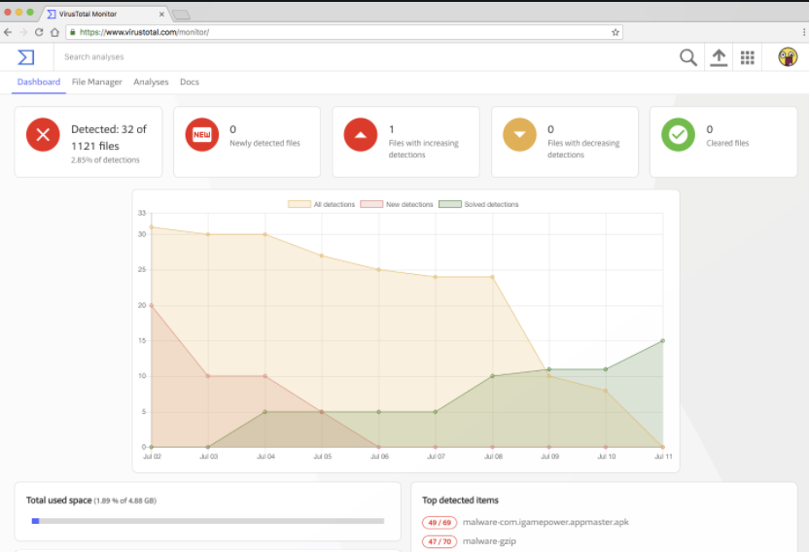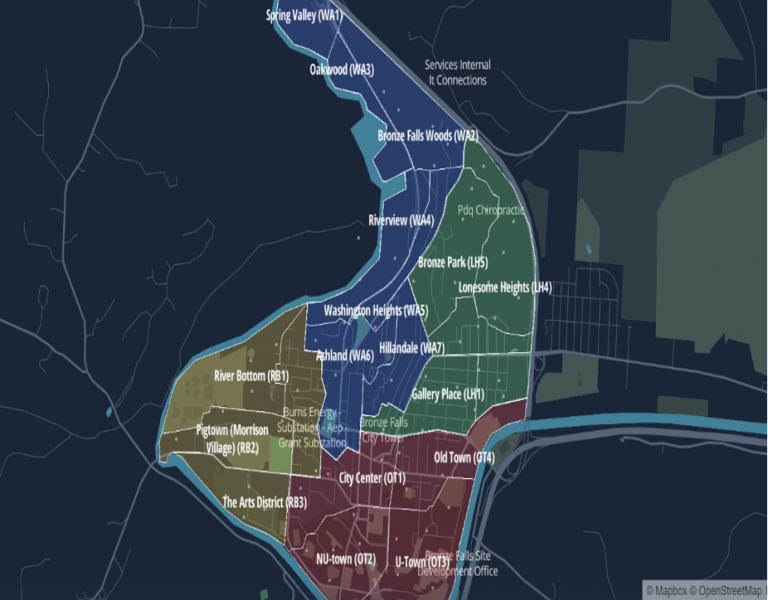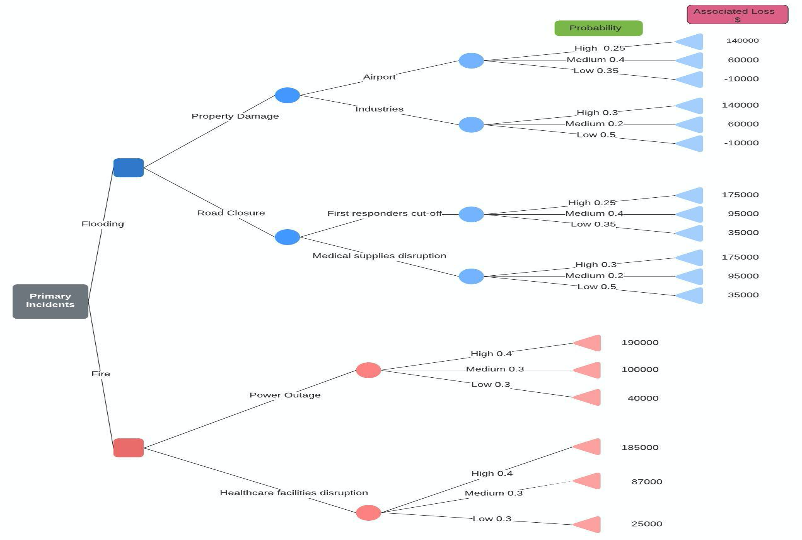Cybersecurity: Phase 3 Incorporating Attribution
In the Cybersecurity PCS module, the design team is currently considering how to provide clues to each member of the team. Keeping in mind the narrative and role-based focus of the PCS, our aim is to craft unique tasks for each team member based on their area of expertise. We are also brainstorming about the artifacts and tools students will employ during game play.

Figure 2 – Virustotal’s Dashboard is Serving as an Inspiration for Attribution Management in Phase 3
The team is also researching models for log files to use in the PCS. The log files are one of the critical artifacts that students will use as they search for the perpetrators of the attack in the narrative’s attribution phase. One of the tools that has served as an inspiration is virustotal.com. This tool provides a live feed of the threats and lets one track the evolution of threat actors. It also has a powerful visualization feature that reveals patterns in the data.
Disaster Response: Mapping Bronze Falls
As October rolled in and pumpkin spiced lattes made a comeback, we rolled up our sleeves to create the 4 districts of Bronze Fall: River Bottom, Old Town, Lonesome Heights, and Western Addition. Using the MapBox platform, and the expertise of our in-house mayor, Andy Fellows, the map shown in Figure 2 was born. This is the map that will be used for the Disaster Response module.
Communities and Neighborhoods
Each district has been imagined to have its unique character which will play a functional role in the game. For example, River Bottom includes the hipster arts district and an industrial area. Western Addition is majorly suburban with beautiful Victorian Architecture, while Lonesome Heights houses the IT and tech companies. Each quadrant also has its unique demographic makeup, a feature that will play a pivotal role in the game as students will decide where to allocate resources to minimize damage in the initial phase of the game.
Understanding Environmental Impacts Through Community-Scale Model
As the team took a deeper dive into the community of Bronze Falls, we were presented with many teachable moments. Noteworthy among those was learning about Super Fund sites. These are designated sites that have experienced high levels of hazardous material contamination requiring years of cleanup effort.

Figure 2 – Map of Bronze Falls Demarcating 4 Districts
We are considering using the industrial sector in Bronze Falls as a potential location for a Super Fund site due to the disaster. Toward this end, we have created a Plastic Factory in Bronze Falls and hope that we can use this opportunity to introduce students to the long-term environmental impact of a natural disaster. Whether or not all of these features end up in the Disaster Response module, they will become part of the fictional community that could be used in other variants later on.
Disaster Response: Incident Chains
Disaster leads to an intricate chain of interconnected events/incidents. When a disaster strikes, it can bring several hazards in its wake. The vulnerability of a specific geographic location determines whether it would be seriously affected.
As we began planning for potential disaster scenarios, we identified several possible chains of events. For instance, flooding will lead to road closures which in turn could cut off access to vulnerable locations by the first responders. Each chain of events would have a probability attached to it and would lead to concomitant monetary losses.

Figure 3. Mock-up of an Incident Chain with Probabilities and Losses
Figure 3 shows one mock-up of our line of thinking. We know that it will go through many iterations and eventually become more complex. For example, each of the associated losses will be linked to a specific asset, such as a hospital or retail spaces. These incident chains will drive the gameplay and give teams a host of dynamic scenarios to contend with in the disaster response playable case study.
Team Member Spotlight: Mitch Cross
Mitch Cross is one of the lead developers for the backend and individual components of the PCS system. These days he is busy getting ready for user testing the cybersecurity PCS. Mitch has also been working on the admin and teacher pages to allow them to better setup and customize the individual PCSs.
Mitch is currently in the last semester of his undergraduate studies in cybersecurity at Brigham Young University. He will soon be starting a Master’s degree in Information Technology. Mitch is passionate about all things technology. He is a hockey aficionado and enjoys watching movies, playing games, and hanging out with friends and family.

Figure 4. Mitch Cross
Careers In Play Leadership Team
Phil Piety, PhD. University of Maryland iSchool (PI and Learning Analytics). ppiety@umd.edu
Beth Bonsignore PhD. University of Maryland iSchool (Co-PI and Design-based Research), ebonsign@umd.edu
Derek Hansen, PhD.Brigham Young University (Co-PI and Game Technology). dlhansen@byu.edu
Dan Hickey, PhD. Indiana University School of Education (Co-PI, Learning Theory and Assessments). dthickey@umd.edu
